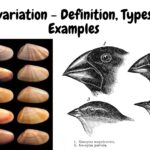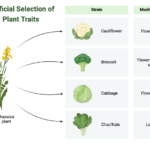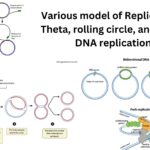Botany 8 Views 1 Answers
Sourav PanLv 9June 9, 2025
Differentiate between: (a) Respiration and Combustion (b) Glycolysis and Kreb’s cycle (c) Aerobic respiration and fermentation
Differentiate between: (a) Respiration and Combustion (b) Glycolysis and Kreb’s cycle (c) Aerobic respiration and fermentation
Please login to save the post
Please login to submit an answer.
Sourav PanLv 9June 9, 2025
(a) Respiration and Combustion
- Respiration is a controlled, enzyme-catalyzed process in living cells that oxidizes organic substrates in small steps to produce ATP, with O₂ as the usual final electron acceptor and CO₂ and H₂O as end-products
- Combustion is an uncontrolled, non-biological oxidation of fuel outside cells, occurring in a single rapid step that releases energy as heat and light, with CO₂ and H₂O as main products
- Respiration conserves chemical energy in ATP; combustion dissipates energy primarily as heat
(b) Glycolysis and Kreb’s cycle
- Glycolysis is a linear ten-step pathway in the cytoplasm converting one glucose into two pyruvate molecules, yielding a net 2 ATP and 2 NADH by substrate-level phosphorylation, and functioning with or without oxygen
- Kreb’s cycle (citric acid cycle) is a cyclic eight-step pathway in the mitochondrial matrix that oxidizes acetyl-CoA to 2 CO₂ per turn, generating 3 NADH, 1 FADH₂ and 1 GTP (ATP) and feeding electrons into oxidative phosphorylation; it requires O₂ indirectly
- Glycolysis provides intermediates for fermentation and biosynthesis (e.g., 3-phosphoglycerate for amino acids); Kreb’s cycle supplies precursors for fatty acid, amino acid and nucleotide synthesis (e.g., citrate, α-ketoglutarate)
(c) Aerobic respiration and Fermentation
- Aerobic respiration uses O₂ as the final electron acceptor in the electron transport chain across the inner mitochondrial membrane, yielding CO₂, H₂O and approximately 30–34 ATP per glucose
- Fermentation operates in the absence of O₂, relying solely on glycolysis in the cytoplasm to produce 2 ATP per glucose and regenerating NAD⁺ by converting pyruvate into lactate or ethanol (plus CO₂), without further ATP synthesis
- Aerobic respiration sustains high-energy demands in multicellular organisms; fermentation enables ATP production under anaerobic or low-oxygen conditions in microbes and muscle cells
0
0 likes
- Share on Facebook
- Share on Twitter
- Share on LinkedIn
0 found this helpful out of 0 votes
Helpful: 0%
Helpful: 0%
Was this page helpful?




